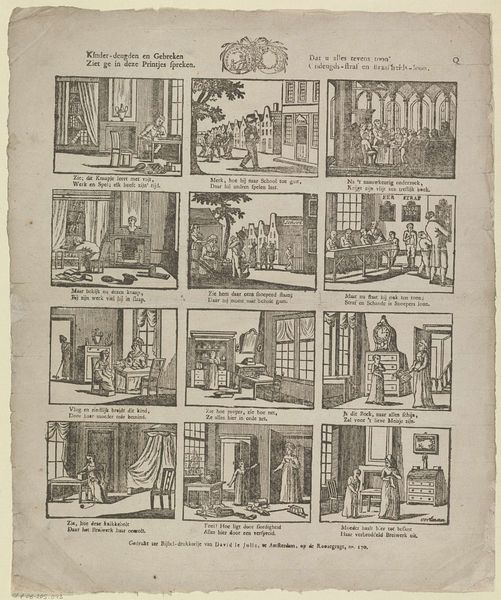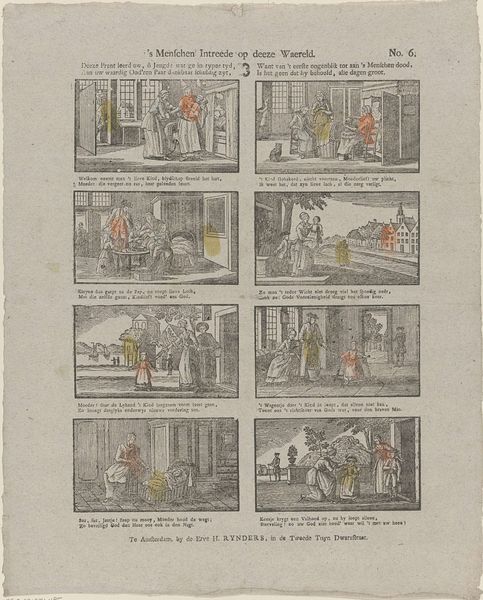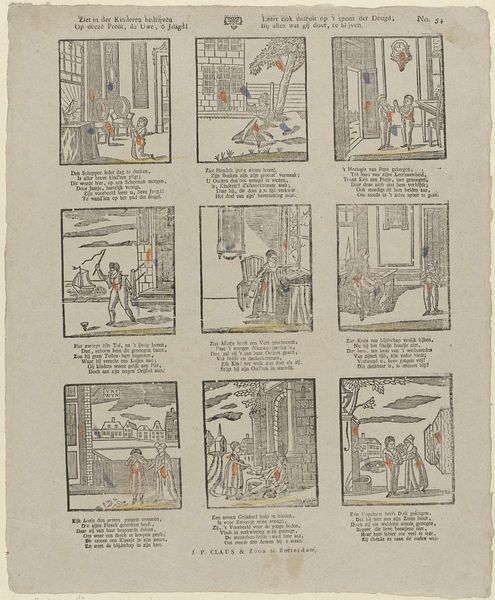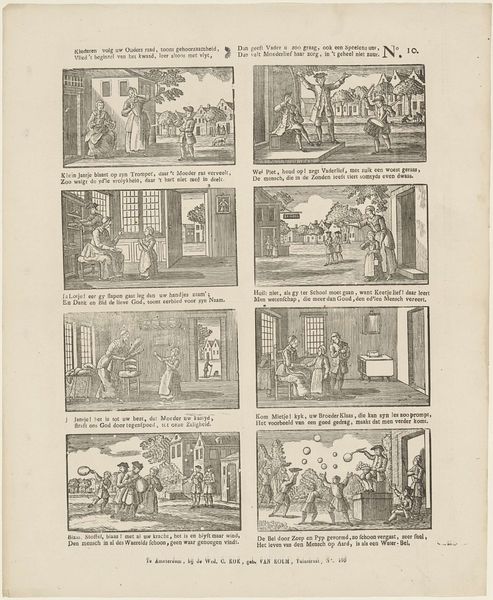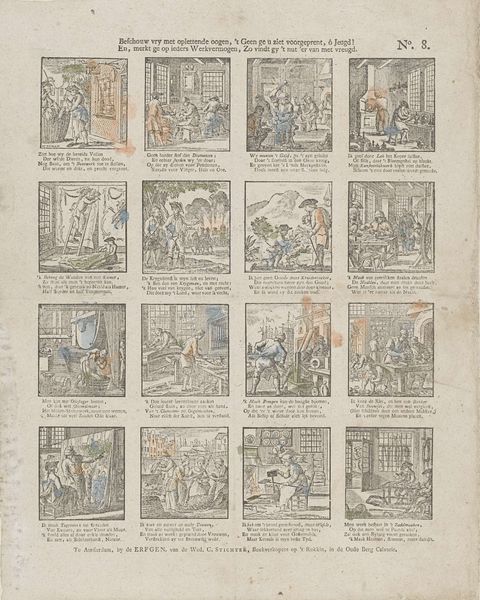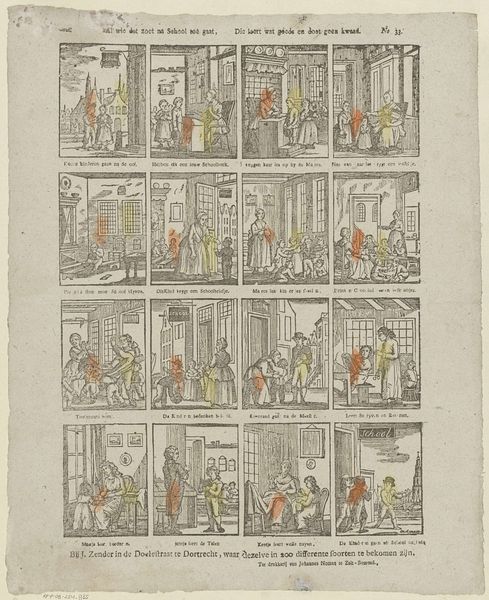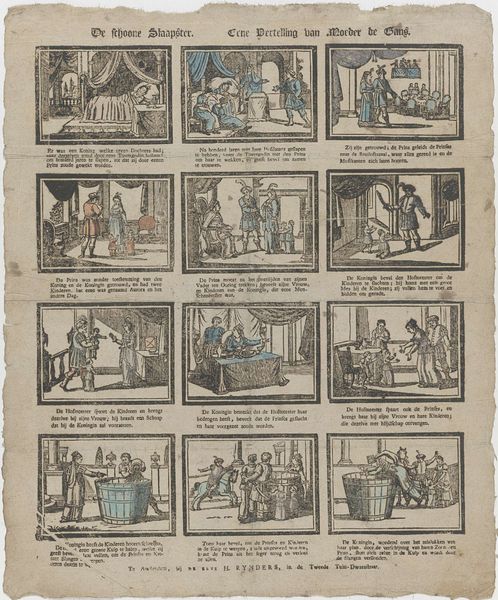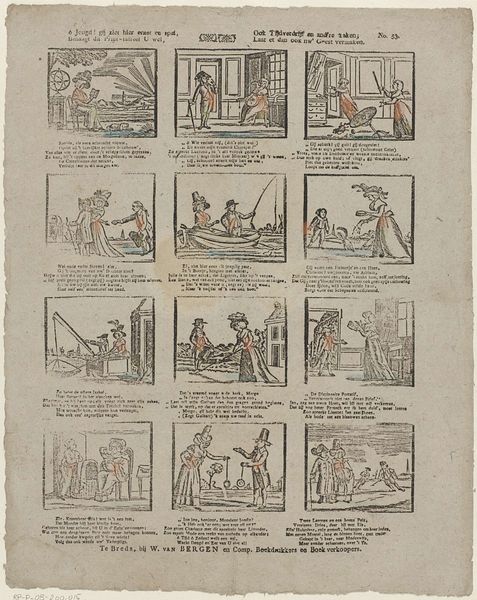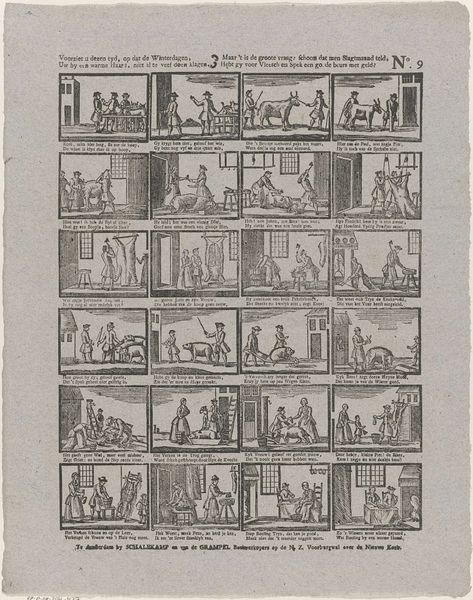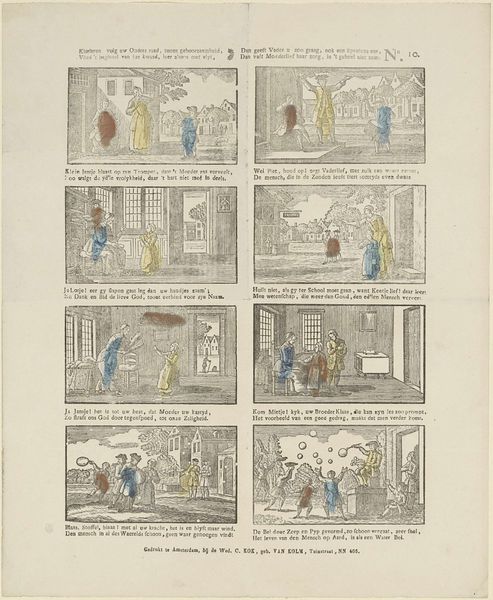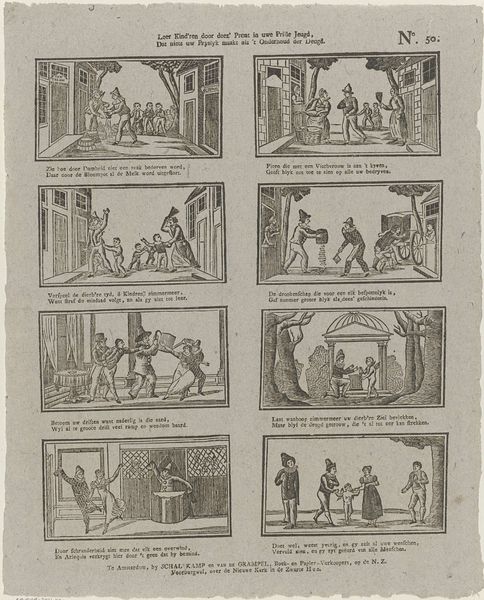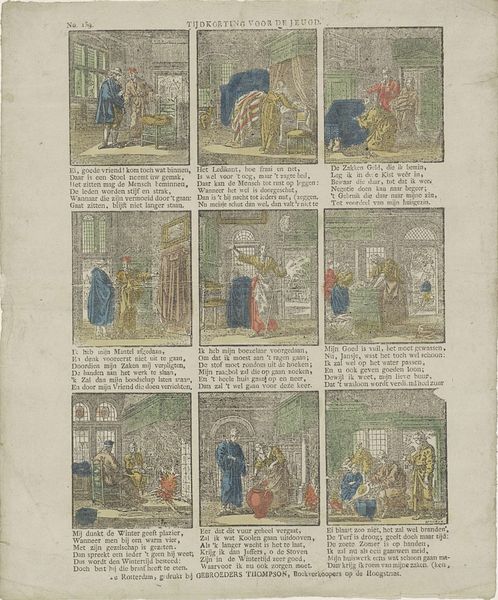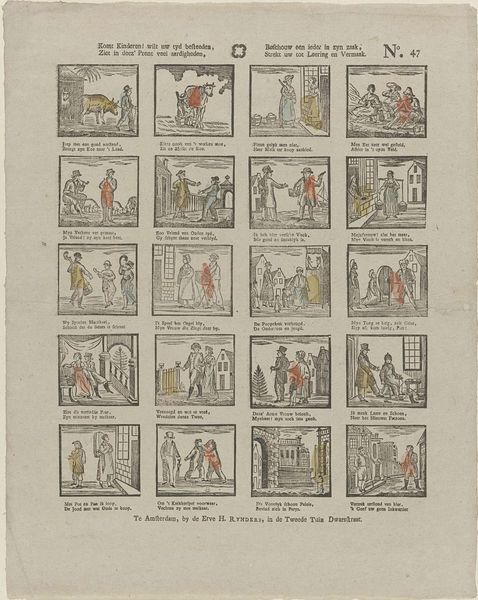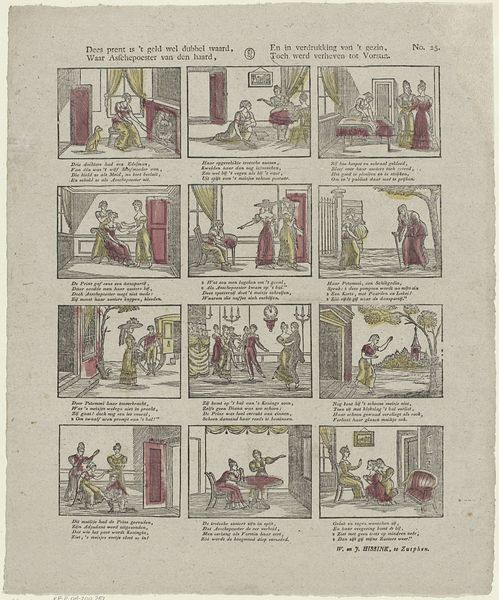
Om kunstmatig goed te lezen / Moet men steeds bedachtzaam wezen; / Is / kindren! u dit niet bekend / Wel / leest dan dikwijls deze prent 1831 - 1854
0:00
0:00
print, engraving
#
portrait
#
aged paper
#
toned paper
#
medieval
#
narrative-art
# print
#
old engraving style
#
figuration
#
child
#
geometric
#
line
#
genre-painting
#
academic-art
#
engraving
#
miniature
#
realism
Dimensions: height 416 mm, width 332 mm
Copyright: Rijks Museum: Open Domain
Editor: Here we have an engraving, dating from between 1831 and 1854, titled "Om kunstmatig goed te lezen" by Erve H. Rynders. It's comprised of a series of miniature scenes arranged in a grid, like a comic strip on aged paper. I’m immediately struck by how each little tableau captures domestic life. What catches your eye? Curator: I see a deliberate attempt to democratize art through accessible reproduction and relatable subject matter. This isn't high art meant for a wealthy patron’s salon. Rynders uses the medium of print –an easily replicated form – to portray everyday scenes for a broader audience. How do the depicted interior spaces and furnishings strike you? Editor: They appear quite simple, almost sparse. It makes me wonder about the intended audience, and how these images reflected their reality or aspirations. Curator: Exactly. The print’s materiality is crucial. The paper, likely a relatively inexpensive grade, speaks to a specific economic reality and mode of consumption. Were these images hung on walls, pasted into books, or used for other purposes? Furthermore, how did Rynders’s workshop operate? Did they employ a team of engravers, and how were they compensated? These questions delve into the labor and production that underpinned artistic creation at the time. Editor: So, it's not just the image itself, but how it was made, by whom, and for whom that's significant? Curator: Precisely. Examining the materials and processes provides insight into the broader social and economic context surrounding the artwork’s creation and reception. Editor: This really changes how I think about engravings. It's not just about the artistry, but about production and consumption. Curator: Indeed. Understanding these elements is key to unlocking a deeper appreciation of the work.
Comments
No comments
Be the first to comment and join the conversation on the ultimate creative platform.
